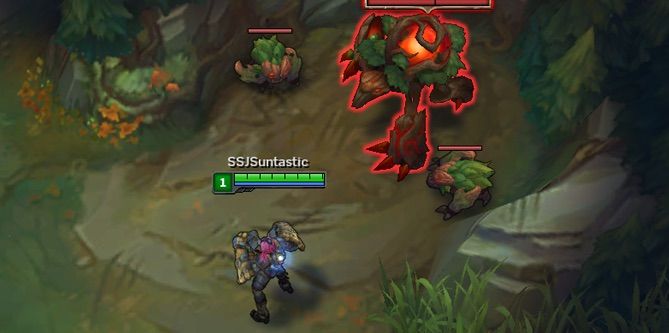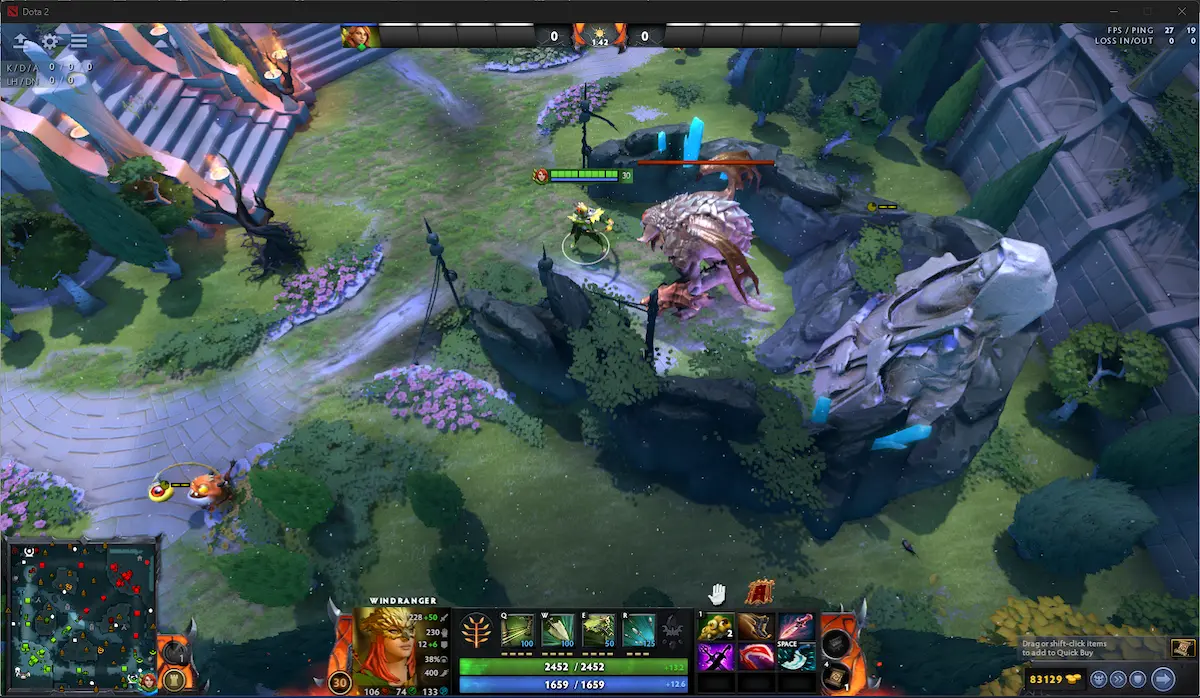You can trace the roots of both Dota 2 vs League of Legends (LoL or League) back to Warcraft III mod Defense of the Ancients. Today, they stand as the two most iconic—and hotly debated—free-to-play multiplayer online battle arena (MOBA) video games, boasting massive player bases and highly competitive esports scenes.
While these giants pretty much define the MOBA genre, they offer radically different gameplay experiences. In this guide, we’ll break down some of the key differences between Dota 2 and LoL, from their map design to mechanics, roles, items, match pacing, and competitive structure.
Map Design
If you compare the Dota 2 vs League of Legends maps, they may look similar at first glance, but that couldn’t be further from the truth.
LoL’s map (Summoner’s Rift) is smaller, features a centralized jungle, and has stricter lane symmetry, with the river cutting the map neatly into two mirrored halves. There’s also a rigid 1-1-2-1 role structure (one solo player in Top and Mid, two players in Bot lane, and one Jungler), and shifting from this format is viewed as trolling.
Dota 2’s map is larger, complex, and unbalanced. It embraces an open terrain, including asymmetrical jungles, rune spots, lotus pools, and uneven boundaries between Radiant and Dire sides. This imbalance encourages flexible lane comps, including off-meta setups like trilanes, dual mid, roaming heroes, and even support carries (e.g., support Alchemist).
Jungle Area
The jungle is a particularly interesting zone in both games. In League, clearing camps offers predictable power spikes and team-wide buffs. Junglers are a distinct role in League, and they follow optimized routes to control objectives, like Baron Nashor and Dragons, while also ganking adjacent lanes. It’s an iconic role that sets the game’s tempo.

Dota 2’s jungle is far more dynamic and is used by all heroes rather than a fixed jungler role. Camps spawn more frequently, can be blocked (to prevent them from respawning), stacked (to increase the gold and XP bounty), and pulled (to manipulate lane equilibrium). Neutral creeps also drop items that grant passive bonuses and abilities.
Terrain Mechanics
The terrain is also very different in these two MOBAs. Dota 2 employs a unique “high ground” mechanic, which means any hero at elevation relative to another opponent will gain vision and miss rate buffs. This makes fighting uphill without vision very problematic because you won’t be able to see or reliably hit them.
Beyond this, Observer and Sentry Wards can only be placed on valid terrain and are limited, making them a strategic resource. And we can’t forget about the trees. Unlike LoL’s unchanging bushes, Dota 2’s trees block movement and sight. You can also quell them down or use them for juking or creating new paths.
Dota 2 vs League of Legends: Heroes vs Champions
Although both games have more than 100 playable characters, LoL champions tend to have simplified ability kits. Roles are also predetermined before you load in, so you’ll queue as either midlaner, tank, attack damage carry, support, or jungler. Except for the weekly rotating free champion roster, most champs must be unlocked by spending in-game currency or real money.
Dota 2 has similar roles—midlaner, offlaner, carry, soft support, and hard support—but nearly all are interchangeable. Heroes are also freely available from the get-go, allowing for creative setups to suit different playstyles. The only limitations are your mechanical skills and the team’s willingness to experiment and not report you.
Item Builds
Itemization is another clear fork in the road. Item builds in League tend to be streamlined because most League of Legends champions are designed with a specific role in mind (think burst assassin, tank support, or poke mage), which the item shop reinforces. This means that champs follow preset paths, and off-meta builds don’t really work.
On the other hand, Dota 2’s items are less strict. You’re not building for your hero; you’re building for the game you’re in. A hero’s function shifts in response to their item build (e.g., going Force Staff instead of Glimmer Cape). Beyond this, neutral item crafting offers more customization for gamers.
Accessibility
At its core, LoL has a lower barrier to entry for new players but is harder to master. It has smooth visuals, intuitive key binds, and each champ has clearly telegraphed animations. Nothing feels sluggish or unresponsive. For example, auto-attacks and spell casts are cancelable, movement is instant (there are no turn rates), and abilities have built-in input buffering.
This is in stark contrast to Dota 2, which has an inherently “noob-unfriendly” design, thanks to its high skill ceiling and steep learning curve. The hero turn rates, ability cast points, uncancelable animations, and weighty movement are intentional. They make Dota 2 a game where information, timing, positioning, and teamwork matter more than pure reflexes.
Game Length & Objectives
Another huge difference is that Dota 2 vs League of Legends is pacing. LoL is (for the most part) built for speed. Matches are roughly 30-35 minutes long and shaped by faster respawns, progressively weaker turrets, surrender options, and a strong snowball mechanic where early leads often transition into decisive outcomes.
Dota 2 is slower, but not in a bad way. Matches run for about 40-45 minutes but can stretch over an hour. This is accommodated by the lack of a surrender system (except in 5v5 unranked matches and only after 30 minutes), progressively stronger towers, and comeback mechanics like buybacks, backdoor protection, and fortification that stalls closely contested matches.
Professional Scene
Last but not least, let’s talk about the esports scene. Both games are wildly popular and boast enormous fan bases.
Dota 2 centers its competitive calendar around The International (TI), an annual tournament with record-breaking prize pools funded largely by the community. What’s interesting is that TI is the only Valve-sanctioned event. Third-party organizers host every other Dota 2 tournament.
In contrast, Riot Games runs League of Legend’s year-round esports ecosystem. This includes major regional leagues like LCS, LEC, LCK, and LPL, culminating in the World Championship (Worlds). This global spectacle regularly draws viewership of over 5 million.
Dota 2 vs League of Legends? The Game’s Always On
Dota 2 and League of Legends may take different paths, but they have a similar destination. These legendary MOBAs aim to provide their players with the opportunity for intense strategy, high-level play, and unforgettable moments. They also both have thriving esports scenes that we’re proud to celebrate here at Thunderpick. We’re your home for esports, whether you just want to stream the latest matches or bet on the action as it unfolds!
Always practice Responsible Gambling and check out our latest promo offers and boosts. T&Cs apply. 18+ to play.

